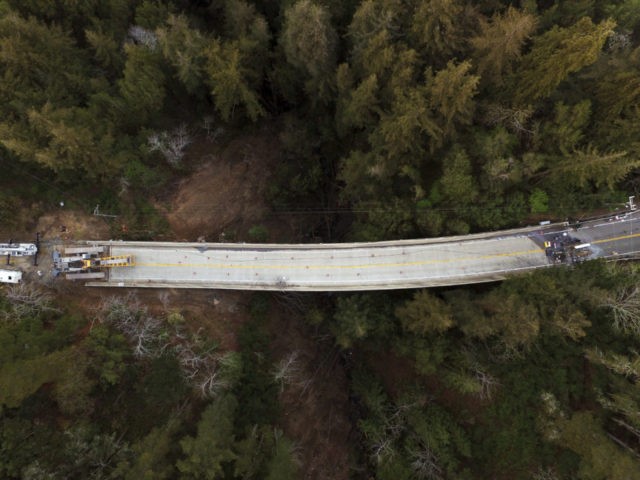Pacific Coast Highway (PCH) near Big Sur reopened in July, 15 months after the last El Niño’s torrential rainfall caused a giant mudslide — and just in time for a new expected El Niño rain.
The 90-mile stretch of California Highway 1 between San Luis Obispo and Carmel was reopened to traffic on July 18. A landslide at Mud Creek caused a 14-month clean-up of the breathtakingly beautiful road that has barely changed since first being built as a Great Depression jobs recovery project in 1937.
The El Nino-Southern Oscillation (ENSO) impacts California climate patterns in regular cycles that vary from El Niño, when sea surface temperatures in the tropical Pacific Ocean rise to above-normal levels for an extended period of time bringing cool temperatures and wet winters; to La Niña, when sea surface temperatures in the central Pacific drop to lower-than-normal levels to bring California warm winters and drought, according to the National Oceanic and Atmospheric Administration (NOAA).
The odds of a new El Niño emerging in the tropical Pacific Ocean by fall have dropped slightly to 60 percent from 65 percent, but there remains at 70 percent chance of El Niño by winter impacting California, according to NOAA’s Climate.gov website.
Fueled by a train of “Pineapple Express” storms between October 2016 and February 2017, California experienced an average of 27.99 inches of precipitation for its wettest 5-month period since record-keeping began in 1895, according to the U.S. National Centers for Environmental Information, a unit of NOAA.
Storm-driven waves up to 15 feet pounded the central California coastline, and Big Sur experienced a rare snowfall in January 2017. Fearing mudslides from the huge cliffs above Pacific Coast Highway, Caltrans began months of intermittent traffic closures in the Big Sur area.
But weakened by torrential 2015 winter and 2016 spring El Niño rains, the July 2016 Soberanes fire, and the Pineapple Express record rainfall, Big Sur suffered its largest mudslide in history in May 2017 as a quarter mile of cliffs collapsed, and over 1 million tons of rock and soil buried PCH with 35- to 40-foot blanket.
The Los Angeles Times reported that the road opening is beginning to bring back tourists to San Simeon’s fabled Hearst Castle. Hotel and restaurant workers in the Cambria area suffered during a six-month Caltrans closure to rebuild the Pfeiffer Canyon Bridge, the only northern access for many communities.
But the Times warned that prices in the area are now sky-high as tourists flood back to one of the most majestic stretches of highway on the planet. The local gas station and country store is charging $4.29 a gallon for regular unleaded fuel, and the San Simeon Motel 6 is charging about $300 per night on weekends.

COMMENTS
Please let us know if you're having issues with commenting.